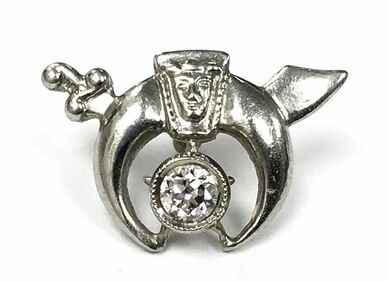TRANSITIONAL CUT
|
Old transitional cut diamonds are the evolution of the old European cut, and are predecessors to today's modern round brilliant cut. After the invention of the power-driven bruting machine in 1891, diamond cutters were able to fashion diamonds with round girdles, called European cut diamonds. Diamond cutters began experimenting with different angles and proportions, trying to find the perfect combination to provide a round diamond with the most brilliance. They're known for their round brilliant appearance, with a closed (pointed) culet, often cut with a smaller table. Old transitional cut diamonds were popular from the 1930s until the 1950s, when today's modern round brilliant cut was perfected. |


